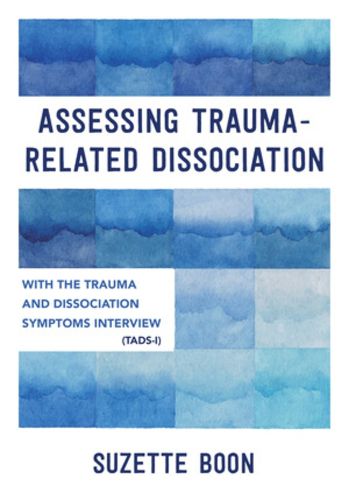Readings Newsletter
Become a Readings Member to make your shopping experience even easier.
Sign in or sign up for free!
You’re not far away from qualifying for FREE standard shipping within Australia
You’ve qualified for FREE standard shipping within Australia
The cart is loading…






Written by a world-leading specialist in trauma-related dissociation, this book comprehensively describes the diagnosis of trauma-related disorders, taking up the many dilemmas around criteria in DSM-5 and ICD-11, symptom recognition, the role of traumatic experiences and of self-report questionnaires, as well as other topics. The book elaborates on the assessment of these disorders, using the diagnostic instrument Trauma and Dissociative Symptoms Interview (TADS-I), developed by the author over decades of work in the field.
Several thematic chapters discuss key differential diagnostic considerations and illustrate them with case reports. Also discussed are the occurrence of false-negative and false-positive diagnoses of trauma-related dissociative disorders, the assessment of traumatic experiences, and the development of a treatment plan.
This book is essential reading for clinicians who diagnose dissociative disorders (or want to learn), and useful for those who want to assist in better recognizing clients with dissociative symptoms and refer them for specialized testing. The complete TADS-I is included as an appendix.
$9.00 standard shipping within Australia
FREE standard shipping within Australia for orders over $100.00
Express & International shipping calculated at checkout
Written by a world-leading specialist in trauma-related dissociation, this book comprehensively describes the diagnosis of trauma-related disorders, taking up the many dilemmas around criteria in DSM-5 and ICD-11, symptom recognition, the role of traumatic experiences and of self-report questionnaires, as well as other topics. The book elaborates on the assessment of these disorders, using the diagnostic instrument Trauma and Dissociative Symptoms Interview (TADS-I), developed by the author over decades of work in the field.
Several thematic chapters discuss key differential diagnostic considerations and illustrate them with case reports. Also discussed are the occurrence of false-negative and false-positive diagnoses of trauma-related dissociative disorders, the assessment of traumatic experiences, and the development of a treatment plan.
This book is essential reading for clinicians who diagnose dissociative disorders (or want to learn), and useful for those who want to assist in better recognizing clients with dissociative symptoms and refer them for specialized testing. The complete TADS-I is included as an appendix.